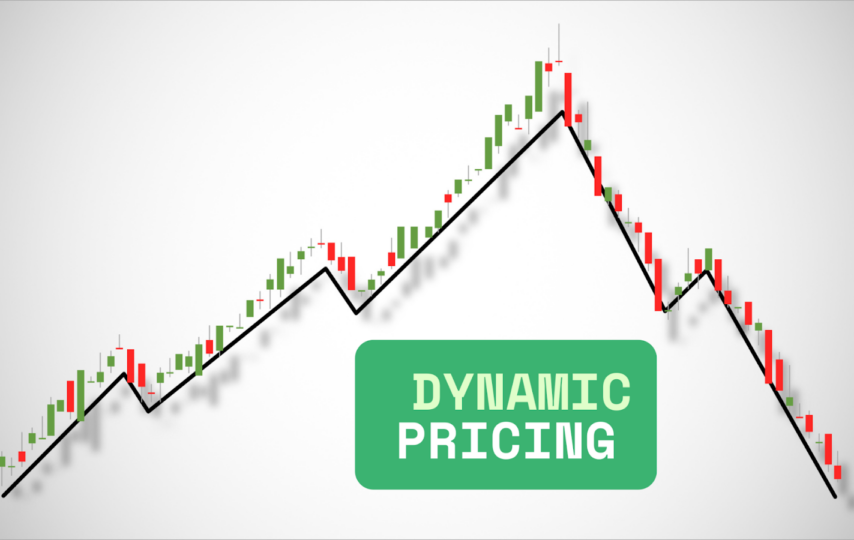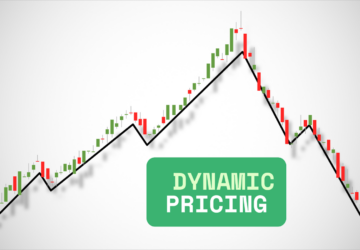A vast majority of us have shopped online and noticed prices of our favorite products changing from one day to the next. That’s nothing but dynamic pricing at play. Simple enough?
But what if you are on the other side of the table? How do you implement dynamic pricing in your e-commerce business? How do you change prices in response to different factors?
This playbook has been specifically created with answers to all these questions, thereby helping you implement dynamic pricing for maximum impact. But first, some basics, starting from the dynamic pricing definition.
What is Dynamic Pricing?
Dynamic pricing is a strategy where the price of a product changes in real time based on different factors like:
- Competitor pricing
- Market demand
- Customer behavior
- External factors, like time of day or seasonality.
It’s widely used in the e-commerce industry, where the right price can help maximize revenue and profitability. It leverages data analytics and AI-powered algorithms to automatically adjust prices to respond to supply and demand changes and competitor prices. It is the opposite of the more rigid static pricing, where you fix a pricing structure up-front and leave that strategy in place for an extended period of time.
Here is a simple graph depicting how price trends vary for a product when these two strategies are adopted for the same product:
Fun Fact: Amazon changes its prices more than 2.5 million times a day.
Example of Dynamic Pricing in Action
Imagine you are selling earbuds to your customers, with a base selling price of $50. The cost price of the product is $40. You have two options:
- Adopt a static pricing model where you do not change the price.
- Adopt a dynamic pricing model where you change the price according to your competitor’s stock levels.
Here are the different scenarios you might encounter, considering no other factors change:
| Competitor Stock Level | Static Pricing Model (Fixed at $50) | Dynamic Pricing Model | Expected Impact on Revenue |
| High Stock (Competitor has excess inventory) | 100 units sold x $50 = $5,000 | 150 units sold x $45 = $6,750 | Increased revenue due to competitive pricing attracting more buyers. |
| Moderate Stock (Competitor has average inventory) | 100 units sold x $50 = $5,000 | 120 units sold x $50 = $6,000 | Higher revenue as dynamic pricing maintains price parity with competition. |
| Low Stock (Competitor running low) | 100 units sold x $50 = $5,000 | 80 units sold x $55 = $4,400 | Lower revenue but higher profit margin per unit sold. |
| Out of Stock (Competitor is out of stock) | 100 units sold x $50 = $5,000 | 70 units sold x $60 = $4,200 | Reduced sales volume, but maximum profit per unit. |
As you can see from the above table,
- Total revenue generated by you when you adopt a static pricing model is $20,000 ($5000*4) for 400 units sold.
- Profit = $20,000 – $40 × 400 = $4,000
- Profit Margin = (20,000/4,000) × 100 = 20%
- Total revenue generated by you after adopting a dynamic pricing strategy is $21,350 ($6750 + $6000 + $4400 + 4200) for 420 units sold.
- Profit = $21350 – $40 × 420 = $4550
- Profit Margin = (21,350/4,550 ) × 100 ≈ 21.3%
This clearly highlights the positive impact of dynamic pricing on revenue, profitability, and inventory clearance, when compared to static pricing.
Benefits of Dynamic Pricing in E-commerce
Dynamic pricing offers a variety of advantages for e-commerce businesses. Here are three major ones:
Maximize Revenue and Profit Margins
By adjusting prices in response to competitor pricing, customer browsing patterns, time-based trends, or other factors, a dynamic pricing strategy lets you sell a product at a price point that pushes the customers to click the sacred ‘place order’ button. Instead of relying on a one-size-fits-all price, you respond fluidly to the market and make every transaction count. Here is a graph depicting how you earn extra revenue by adopting dynamic pricing:
Source: Economics Online
Stay Competitive
Remember, competitors will always try to undercut you by just a few dollars. This might cost you the sale, more often than not. Dynamic pricing helps you keep your prices aligned with real-time market shifts. Whether this means adjusting to competitor discounts or changes in supply and demand, you will easily attract and engage customers who are actively comparing options.
Sell Excess Stock or Push Seasonal Items
Inventory that doesn’t move ties up cash flow and warehouse space. Dynamic pricing allows you to gradually lower prices on slow-moving or seasonal stock, nudging customers to buy without jumping straight to deep discounts. It’s a more surgical approach to discounting. You maintain healthier margins while keeping your inventory lean and responsive to seasonal trends.
Dynamic Pricing Strategy: Steps to Implement in Your E-Commerce Business
The benefits of dynamic pricing ecommerce cannot be fully utilized unless you approach it strategically. Here are 5 key steps you need to adopt to successfully implement dynamic pricing ecommerce:
Step 1: Define your pricing goals
The first and most important step is to define your pricing goals. Think of this as setting the compass for your entire pricing journey. Without clear goals, it’s easy to misalign your efforts and confuse your customers. These goals could vary depending on your business’s current situation and long-term strategy. Common goals include:
- Competitive Positioning
- Revenue Growth
- Inventory Clearance
- Profit Margin Optimization
- Customer Retention and Loyalty
Once you’ve picked a goal, the next step is to define how you’ll measure success. Dynamic pricing is predominantly data-driven, so identifying the right KPIs is very important. Here are a few KPIs that are commonly measured to determine whether your dynamic pricing strategy is successful or not:
💡Pro Tip: Avoid selecting multiple goals at the same time to avoid conflicts. For instance, if you select both profit margin optimization and inventory clearance as your goals, you will risk setting contradictory pricing rules which can confuse the algorithm and the customers.
Step 2: Segment Your Competitors
Not all competitors have the same impact on your business, so it’s important to segment them based on different parameters like market share, target audience, and product positioning. By categorizing competitors into tiers, such as direct competitors, secondary competitors, and fringe players, you can tailor your pricing responses more effectively.
For example, you might respond aggressively to price changes from direct competitors, while monitoring others less frequently. This targeted approach prevents wasted effort and helps you focus your pricing strategy where it matters most.
💡 Pro Tip: Segment by geographic reach if you operate in multiple markets. Your pricing strategy might differ for local competitors versus global brands as factors like shipping costs and regional preferences come into the picture.
Step 3: Start with one or two categories/products
Don’t attempt to roll out dynamic pricing across your entire inventory. Instead, choose one or two categories or even individual products to begin with. Ideally, fast-moving items or seasonal goods with fluctuating demand are your best bet. Starting small allows you to study competitor data and fine-tune your pricing rules without overwhelming your operations or risking widespread pricing inconsistencies.
💡Pro Tip: Within fast-moving items and seasonal goods, choose products with high data availability. This will help you observe patterns and make strategically significant pricing conclusions faster.
Step 4: Determine floor/ceiling prices
One of the biggest risks in dynamic pricing is price volatility. Without boundaries, your prices could fluctuate too wildly. It could potentially damage customer trust or cut into your profit margins. So always establish floor and ceiling prices to define your pricing limits. The floor price ensures your product never goes below cost or below a minimum acceptable margin, while the ceiling price protects against setting prices so high that customers are driven away.
💡Pro Tip: Factor in customer perception zones while setting ceiling prices. A product priced just above a “psychological threshold” (e.g., $101 vs. $99) can drop conversions. Use round number psychology to your advantage when defining ceilings.
Step 5: Create pricing rules based on competitor data
Your pricing rules shouldn’t exist in a vacuum; it should revolve around competitor data. So keep a close eye on your competitors’ moves. Staying on top of competitor prices, their inventory levels, their promotional strategies, their ratings, shipping speeds, and so on, ensures you set the right dynamic pricing rules and don’t fall behind or miss out on opportunities to gain a competitive edge.
For example, set a rule in such a way that if your competitor suddenly raises prices due to low stock, your system should slightly undercut them to capture that demand, provided they still fit within your profit margin rules.
💡 Pro-Tip: Consider competitor shipping speeds and customer reviews when creating dynamic pricing rules. If you have faster shipping or better ratings, you can justify a higher base price.
Wrap Up
The real power of dynamic pricing lies in collecting and leveraging competitor data to make smarter pricing decisions. By integrating various real-time competitor insights into your pricing strategy, you respond faster to market shifts, win the price war and gain customer trust, at the same time. After all, when it comes to dynamic pricing, you are not just reacting, you are anticipating – capitalizing on opportunities before your competitors do.







